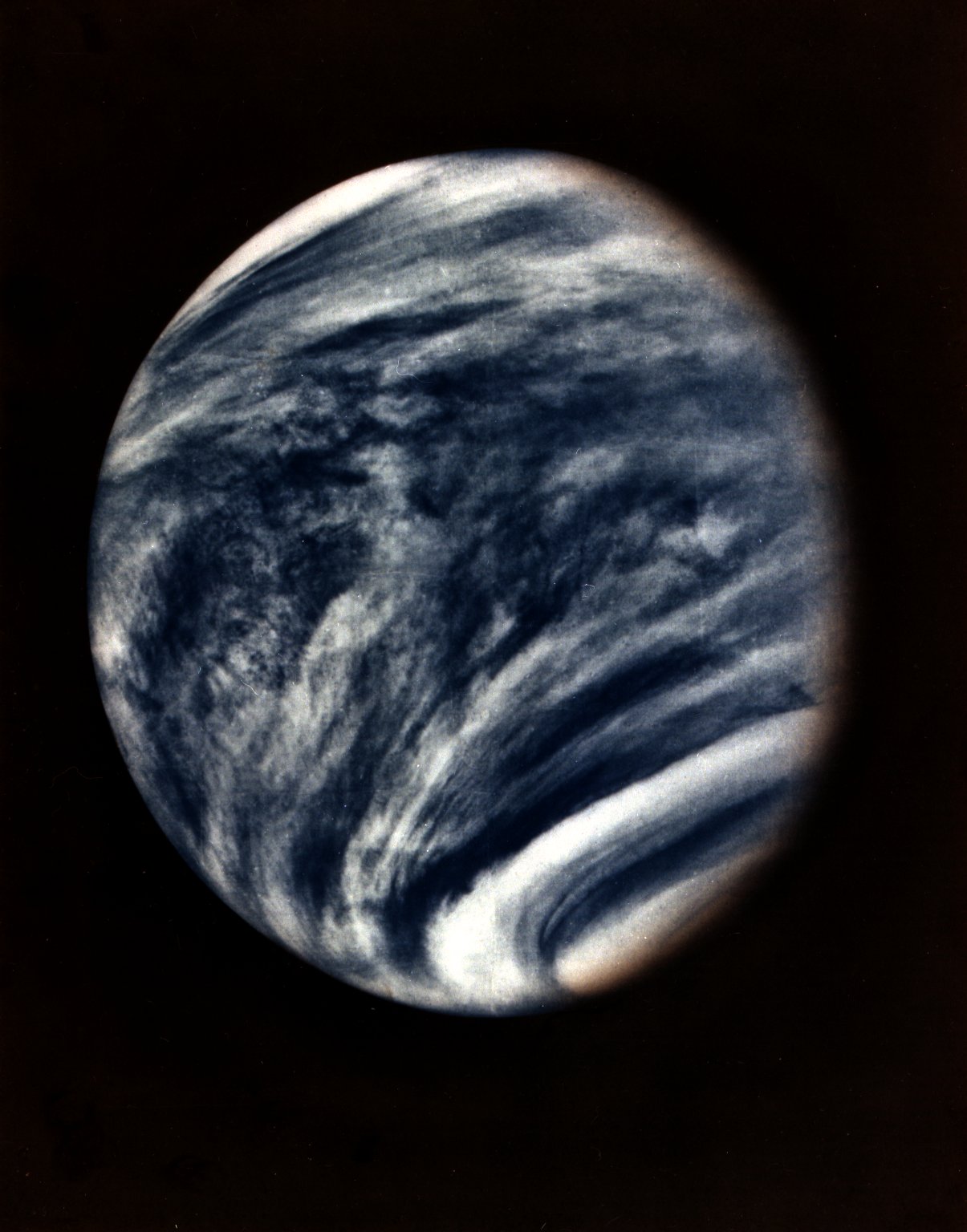How Big is Venus?
Often called Earth's sister planet, Venus is the closest in size, with a mass of more than 80 percent that of our planet and a diameter of only a few miles less. It is also the closest planet to our own in terms of location. But despite these similarities, the two planets have vastly dissimilar atmospheres, which create wildly different living conditions at the surface.

Radius, diameter and circumference
Venus has a mean radius of 3,760 miles, or 6,052 kilometers. Most planets in the solar system, including Earth, spin so rapidly that they bulge slightly at the middle, creating a radius that differs at the poles and the equator. Not so for Venus, which only rotates once every 243 Earth days or so (and backwards, at that; on Venus, the sun rises in the west and sets in the east, and is larger in the sky). The planet remains essentially spherical.
A trip around the equator of Venus would carry you 23,627 miles (38,025 km), 95 percent the distance around Earth's center line.
Highs and lows
Venus is a volcanic planet, with about four-fifths of the planet covered by smooth, lava-hardened plains. The surface has few impact craters, indicating that it is relatively young. The planet's surface area is 90 percent that of Earth's, covering 178 million square miles (460 million square km). The planet boasts two land masses, Ishtar Terra and Aphrodite Terra, which make up about 8 percent of its surface area (as compared to the 25 percent of continent-covered surface on Earth). The Venusian continents are raised areas with no relation to the plate tectonics that form land masses on Earth; of course, there are no oceans on Venus to divide them, only volcanic plains.
The highest mountain on Venus, Maxwell Mons, lies on the northern continent of Ishtar Terra, 7 miles (11 km) above the average surface level of the planet. In comparison, Mount Everest is only 5.4 miles (8.8 km) above Earth's sea level. Ishtar Terra is about the size of Australia, and contains the four mountain ranges of Venus, providing potential evidence that the planet's surface may be in motion.
Aphrodite Terra lies just to the south of the equator. It is about half the size of Africa, and boasts deep rift valleys, which may also offer evidence of surface movement. Diana Chasma, composed of canyons and mountains on this continent, is the lowest point on the planet. One of the canyons drops 1.8 miles (2.9 km) below the mean surface level, 14 km lower than the peak of Maxwell's Mons. In comparison, the difference between Mount Everest and Earth's lowest point, in the Marianas Trench, is approximately 12 miles (20 km).
Density, mass, and volume
Venus is a rocky, terrestrial planet like Earth, and likely formed the same way at the same time. It has a mass of 4.87 trillion trillion kilograms, about 82 percent that of its sister planet.
Like its size, its density is comparable to Earth at 5.243 grams per cubic centimeter. The volume of the planet is 223 billion cubic miles (928 billion cubic kilometers), about 86 percent that of our own.
— Nola Taylor Redd, SPACE.com Contributor
Related:
Join our Space Forums to keep talking space on the latest missions, night sky and more! And if you have a news tip, correction or comment, let us know at: community@space.com.
Get the Space.com Newsletter
Breaking space news, the latest updates on rocket launches, skywatching events and more!

Nola Taylor Tillman is a contributing writer for Space.com. She loves all things space and astronomy-related, and enjoys the opportunity to learn more. She has a Bachelor’s degree in English and Astrophysics from Agnes Scott college and served as an intern at Sky & Telescope magazine. In her free time, she homeschools her four children. Follow her on Twitter at @NolaTRedd










